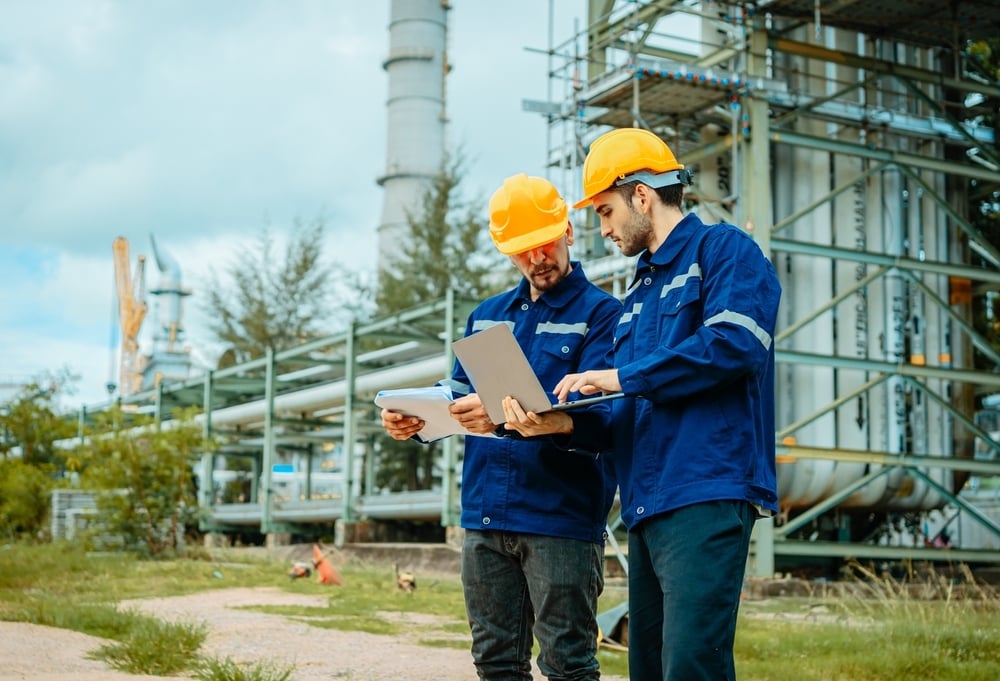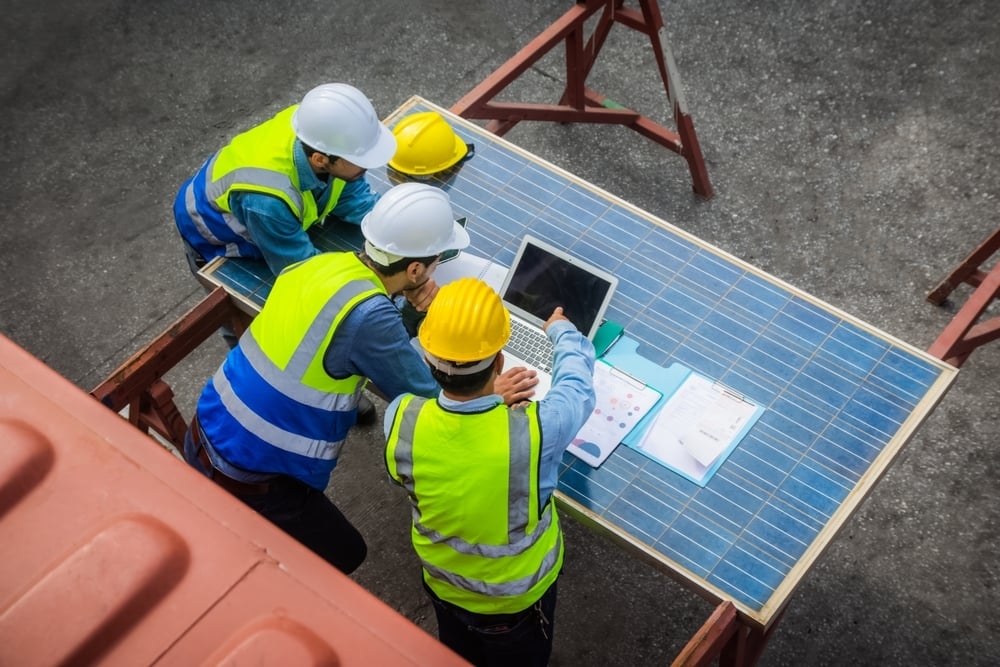
Connected Construction – The Way of the Future
Explore the future of construction with connected construction management technology. Learn how Vitruvi is improving efficiency, collaboration, and project outcomes.
The Next Evolution in Construction Management
The construction industry has a tradition of operating in silos. This involves isolating different teams according to their roles and project tasks. This can often result is miscommunication, budget issues, and lack of visibility that can cause issues that would otherwise be avoidable. Traditional project management methods have long relied on manual processes, paper-based documentation, and fragmented communication channels.
While effective in the past, these conventional approaches often lead to inefficiencies, delays, and budget overruns.
New trends and technologies are re-shaping the future of network construction. Enter connected construction, a modern approach that's transforming how construction projects are managed and executed. Connected construction offers the potential to enhance every aspect of project management. It integrates advanced technologies to enable unprecedented levels of efficiency, collaboration, and innovation.
As the construction industry faces increasing pressure to deliver projects faster, safer, and more sustainably, embracing technological advancements like connected construction is not just beneficial — it's essential.
What Is Connected Construction?
Connected construction refers to the integration of digital technologies and intelligent systems to streamline construction processes. This integration process helps improve decision-making and enhance overall project outcomes. It connects people, machines, and data in a cohesive ecosystem to break down silos within teams and processes. It also enables automation and the ability to align processes and operations.
Technologies such as the Internet of Things (IoT), cloud computing, mobile devices, and GIS mapping play a pivotal role in connected construction. These tools facilitate real-time communication, collaboration, and data sharing among all project stakeholders.
IoT is a network of devices that can collect and share data such as industrial machines and wearable sensors, while GIS integrates location and mapping data for comprehensive visualization and logistical coordination.
AI and machine learning (ML) analyze data to offer predictive insights and can optimize resource allocation. Cloud-based platforms ensure seamless information sharing regardless of location.
Alternate and Virtual Reality (AR and VR) provide immersive experiences and are being utilized in creative ways such as for design reviews and safety training.
Connected construction allows data to flow freely. It connects all elements of a construction business, from design and planning to project management and field reporting. By integrating data across the project lifecycle, it ensures that all information flows seamlessly from one system to another, keeps all teams informed and connected, and can provide real-time data analytics and even predictive maintenance insights.

What Is The Value of Connected Construction?
The value of connected construction lies in its ability to unify the complex elements of a project for a more streamlined and effective workflow. By linking people, processes, and tools together, it fosters better collaboration among stakeholders, boosts productivity, and reduces errors and miscommunication.
Companies adopting connected construction technologies can automate processes and keep teams better informed. It also enhances all phases of development, from design and planning to construction and closeout. This integrated approach transforms project management and execution, leading to safer work environments, better resource utilization, and improved project outcomes.
Connected construction aims to solve traditional construction challenges. These include undocumented changes to a project, negative cash flow, billing delays, and under or overpayments. It also addresses issues with unplanned deliverables, surplus waste, and low performance.
Network construction companies can manage data seamlessly across the project lifecycle by using a unified digital platform. This fundamental transformation creates meaningful data workflows, facilitates stakeholder collaboration, and benefits the project's success.
Connected construction makes the right data accessible to project teams at the right time. This can improve processes and productivity and enhance other aspects of your business such as quality, safety, transparency, and sustainability.
Real-time access to project data and analytics enables construction professionals the ability to make informed decisions, optimize workflows, and minimize delays and errors. This approach enhances communication and collaboration among project teams, that further results in better project outcomes and increased customer satisfaction.
By leveraging data analytics, companies can gain insights into project performance and identify areas for improvement. Your company can then implement strategies to optimize outcomes and stay competitive. Connected construction also helps reduce costs and increase profitability by accurately defining project timelines. This reduces the risk of rework or errors, saving your company time and budget.
Real-time updates and design changes through connected construction minimizes risks. With a single source of information for the whole project, any change made is reflected everywhere. This further reduces errors and on-site risks and enhances project agility and efficiency.
Tool interoperability results in higher work quality, as connected construction software ensures seamless communication and helps eliminate task duplication and repetitive data entry. This allows team members to focus more on production and less on data collection.
Connected construction technology uses Wi-Fi, on-ground sensors, and onboard equipment sensors to enhance operational productivity. It helps manage assets by monitoring the overall health of on-site stationary and mobile assets. This then allows field technicians to quickly identify those that need repair or maintenance.
With accurate information readily available via connected construction technologies, all team members view the same data. This allows them to achieve rapid decision-making and issue resolution. Better communication and collaboration reduce delays and project costs by resolving issues quickly and preventing further risks.
Connected construction assists subcontractors with inventory management, scheduling, and modeling. Although there's an initial investment required in cost and training teams to use it effectively, the benefits of connected construction make it a worthwhile investment for the future of the construction industry.
How does Vitruvi Enabled Connected Construction?
Our construction management software, the Vitruvi As-Built Platform, is built for everyone working on a construction project. Here are some of the ways Vitruvi helps streamline the construction process, and our approach to connected construction:
-
Streamlining Communication and Collaboration: Vitruvi provides a platform that centralizes communication and collaboration among construction project teams. This streamlines workflows and ensures that everyone involved in the project is on the same page.
-
Real-Time Data and Insights: Vitruvi enables real-time tracking of project progress, resource utilization, and other key metrics. This access to live data empowers project managers to make informed decisions quickly and efficiently.
-
Integrated Project Management Tools: It also offers integrated tools for scheduling, budgeting, and document management. This comprehensive approach enhances efficiency and reduces the risk of errors.
-
Mobile Accessibility: Vitruvi is accessible via mobile devices, allowing users to stay connected and manage projects from anywhere. This flexibility improves responsiveness and enables seamless communication even when team members are on-site.
-
Customizable Solutions: Vitruvi's technology is adaptable to the unique needs of your construction projects. It offers customizable features and configurations that ensure it aligns with the specific requirements of different teams and projects.
-
Enhanced Safety and Compliance: Vitruvi includes features designed to enhance safety protocols and ensure compliance with regulatory requirements. This focus on safety helps to mitigate risks and create a safer work environment for everyone involved.
-
Scalability and Growth: Vitruvi's platform is scalable, meaning it can accommodate projects of various sizes and complexities. This scalability enables construction companies to leverage the technology as they grow and take on larger projects.
Vitruvi revolutionizes construction management by providing a centralized platform that streamlines communication, offers real-time insights, integrates project management tools, and prioritizes safety and compliance. Our customizable solutions and scalability make it a valuable asset for construction companies looking to optimize their workflows and achieve greater project efficiency.
Subscribe and stay up to date with the newest posts delivered right to your inbox!

